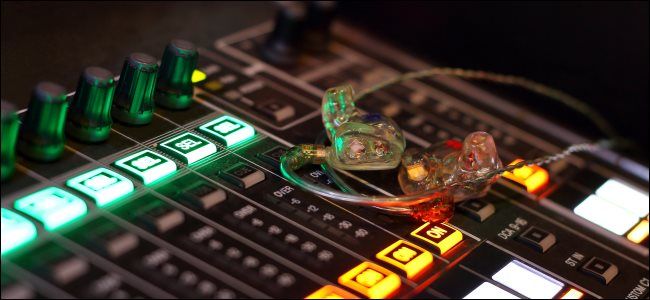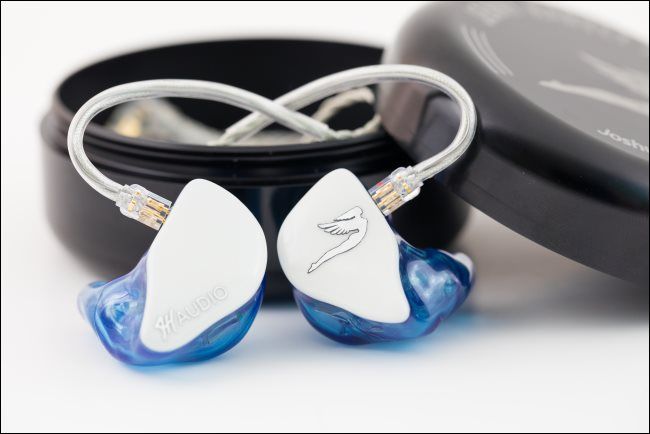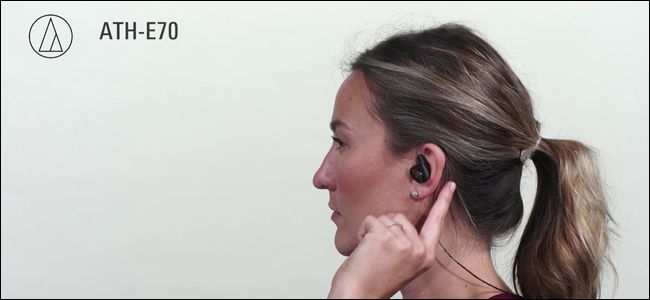Quick Links
In-ear monitors (IEMs) have gained widespread popularity among audiophiles recently due to their pristine audio quality. Let's check out what makes them different from other listening devices.
What Is an In-Ear Monitor?
There's a good chance you have some kind of audio listening device on your ears right now. It might be a pair of wireless earbuds, like Airpods, or a hefty, wired pair of headphones. In-ear monitors are a different kind of audio device altogether. They're mainly intended for professional use. When it comes to fit, they're somewhere between the tight seal of headphones and the low profile of earbuds.
They're referred to as monitors because they were initially created for musicians and performers to "monitor" a combination of audio sources in different places. For example, a member of a band would hear a mix of different instruments and vocals that would directly come into his or her IEM. They were also used by singers to listen to an instrumental guiding track as they recorded vocals. Artists and media personnel usually have IEMs specially fitted to the shape of their ears.
Nowadays, IEMs are available to everyone. Stores offer a wide range of prices, designs, and sound profiles for every type of listener. You can likely find them at your local audio store or music shop.
While IEMs that cost tens of thousands of dollars still exist, you can get a fantastic-sounding pair that don't cost any more than a regular pair of earbuds. There are also many audiophile communities dedicated to comparing, optimizing, and discussing in-ear monitors.
What Makes IEMs Unique?
The most obvious difference between in-ear monitors and other devices is the way they look. IEMs are shaped to resemble an ear. They usually come with silicone, foam, or rubber ear tips that fit inside your ear canal. Many monitors also have a bendable or molded wire that hooks at the top of your ear.
Because they fit so snugly in your ears, IEMs tend to be very comfortable to wear for long periods of time. Their shape and the tips also block out ambient noise.
Another feature unique to IEMs is their modular nature. Almost all models have detachable cables and earpieces, which are interchangeable with other models. You can swap out your cable for a braided one for additional durability, or very long wires for live performances.
Perhaps the biggest reason audiophiles tend to gravitate towards IEMs is the way they sound. Personal audio devices use a transducer, also known as a driver, that converts electronic signals into audio waves. Most modern IEMs use what's called a balanced armature, which is a tiny, powerful transducer originally invented for hearing aids. Others use a dynamic driver, which can improve bass performance.
High-end monitors can have multiple drivers, each of which is intended for different frequencies, so you can customize an audio mix to your liking.
Using IEMs as an Average Listener
There are a lot of benefits to using an IEM as your daily audio-listening device.
Even if you're just an average listener, you'll likely notice a significant difference in audio quality between a regular pair of earbuds and an in-ear monitor. More bass, more clarity, and a higher range of frequency are just a few things you can expect.
The way IEMs are shaped to your ear, and the fit of the ear tips, also allow you to experience a fuller range of sound.
Many headphones prevent airflow, so your ears and the surrounding area get hot and sweaty. Over-ears can also be heavy. IEMs are lightweight and comfortable to wear for extended periods.
While in-ear monitors don't have active noise canceling, they do block most noise from the surrounding area. Even at low volumes, it's unlikely you'll hear anything in your environment. This means you can play audio at a reasonable level while maintaining noise-cancellation properties.
Should You Get a Pair of IEMs?
If you care about pristine audio quality and want excellent noise cancellation, getting a pair of IEMs isn't a bad idea. However, if you prefer wireless earbuds or find audiophile tech intimidating, in-ear monitors might not be for you.
However, if you do pick up a pair of IEMs, it's a great way to break in to the audiophile community. You'll find plenty of reviews, guides, and trading groups for enthusiasts. There are also resources for obtaining the best equalizer performance out of your IEMs.
Of course, before you purchase IEMs, make sure you have a 3.5 mm headphone jack on the device with which you want to use them. Many mobile phone manufacturers have completely phased out the headphone jack in their latest devices, so you might also have to purchase a dongle. However, most lap- and desktops still have built-in audio jacks.
Alternatively, you might want to look into getting a direct box. Many audiophiles purchase one of these devices to get the best possible performance out of their IEMs.



